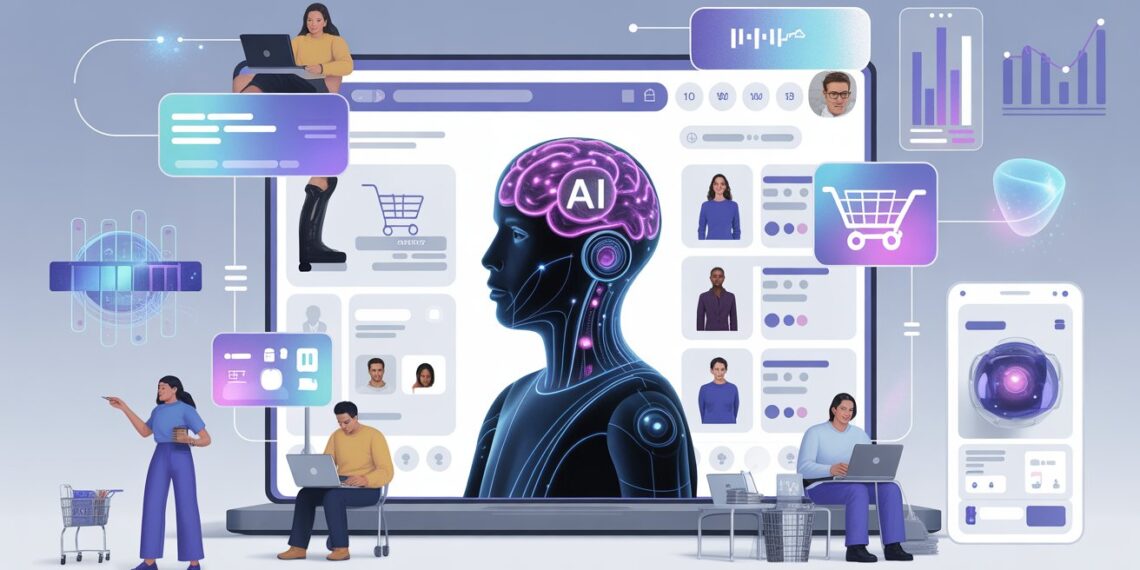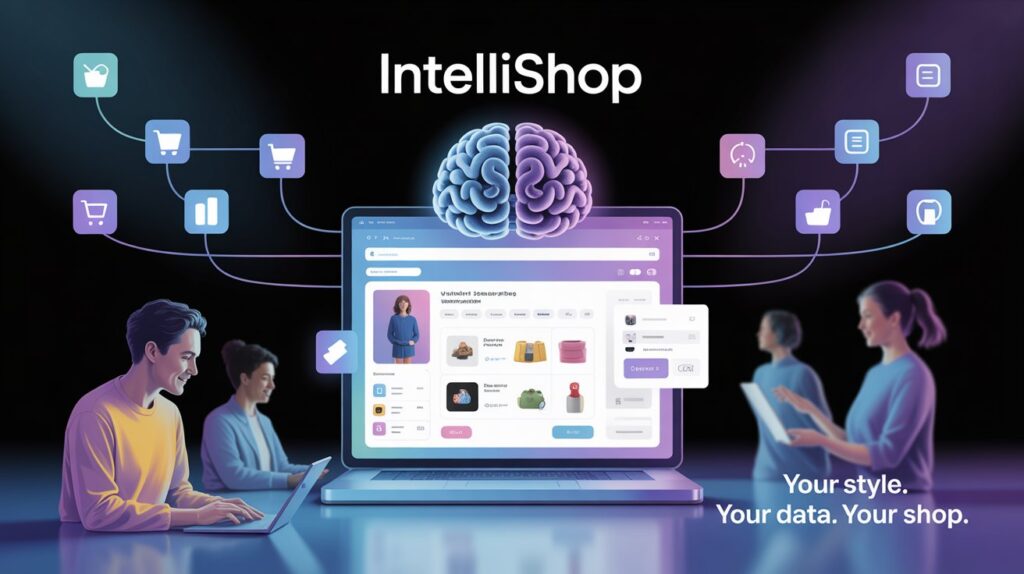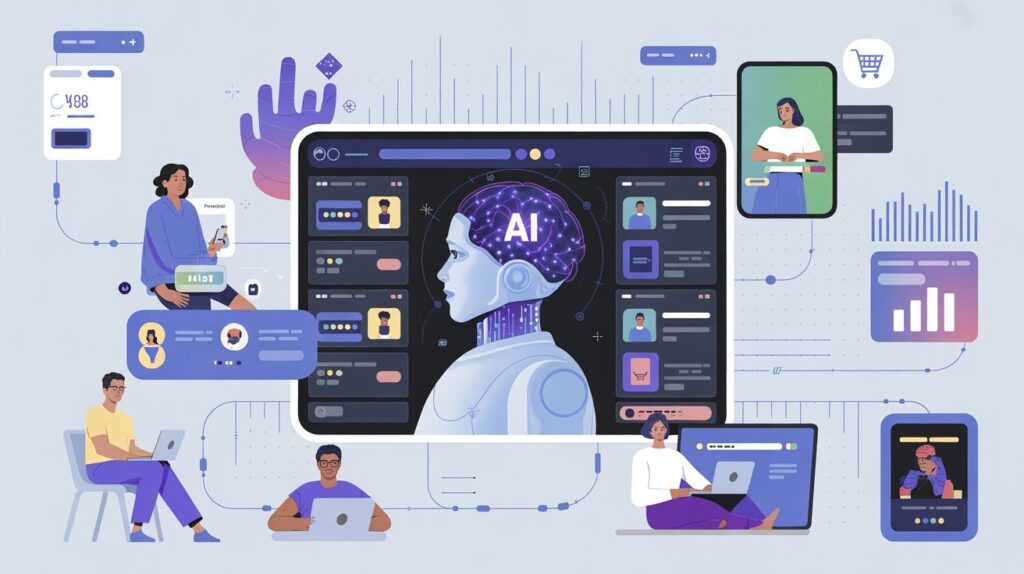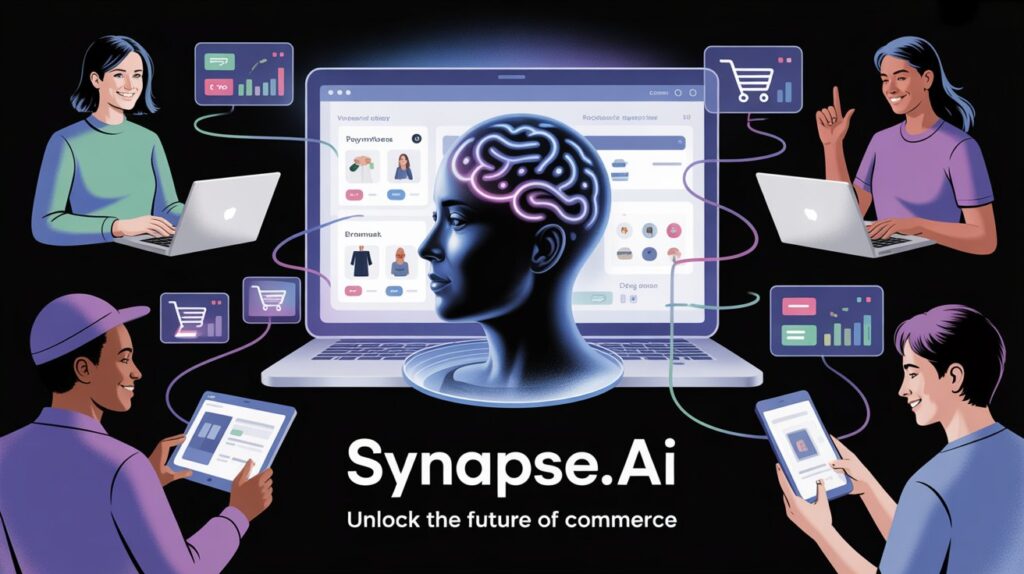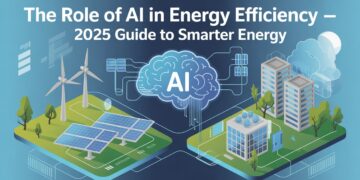The way customers shop online has changed dramatically over the last decade. Gone are the days when a one-size-fits-all digital storefront could satisfy consumer expectations. Today, buyers demand seamless, individualized experiences that adapt to their needs, preferences, and context. Businesses that fail to personalize risk higher bounce rates, lower conversions, and missed revenue opportunities. This is where AI-Driven Personalization in eCommerce comes in.
By leveraging artificial intelligence, machine learning, and big data, companies can deliver hyper-relevant product recommendations, personalized search results, dynamic pricing, and tailored customer journeys. This article is a comprehensive exploration of the technologies, strategies, benefits, challenges, and future trends shaping AI-powered personalization in 2025 and beyond.
What Is AI-Driven Personalization in eCommerce?
At its core, AI-driven personalization refers to the use of algorithms and machine learning models to analyze customer data and deliver individualized shopping experiences. Unlike traditional rule-based personalization (e.g., showing winter coats to users in colder regions), AI-driven personalization is dynamic, adaptive, and often predictive.
Key characteristics include:
- Real-time adaptation: AI adjusts recommendations instantly based on browsing or purchase behavior.
- Context-awareness: Algorithms factor in location, time of day, and device type.
- Scalability: AI can process millions of data points simultaneously, enabling personalization at scale.
- Predictive capabilities: Beyond reacting, AI can anticipate what customers want before they explicitly state it.
Why Personalization Matters More Than Ever
Rising Customer Expectations
Shoppers are accustomed to personalized feeds on platforms like Netflix, Spotify, and TikTok. This expectation now extends to online retail. Customers expect curated product suggestions, frictionless search, and contextual promotions that reflect their past interactions and current needs.
Competitive Differentiation
With eCommerce competition intensifying, personalization has become a key differentiator. Businesses that leverage AI can stand out by providing memorable shopping journeys, while those that fail to personalize risk being forgotten in an oversaturated market.
Proven Business Impact
- Amazon attributes 35% of its revenue to its recommendation engine.
- McKinsey reports that personalization can drive 10–30% revenue uplift for eCommerce businesses.
- Customers are more likely to return when their shopping experiences feel tailored.
How AI Personalization Differs from Traditional Methods
Aspect |
Traditional Personalization |
AI-Driven Personalization |
|---|---|---|
Data Source |
Demographic and static data |
Behavioral, contextual, and real-time signals |
Approach |
Rule-based (if-then logic) |
Predictive, adaptive, self-learning |
Scalability |
Limited |
Highly scalable |
Flexibility |
Manual updates required |
Continuous optimization through machine learning |
Core Technologies Behind AI Personalization
Machine Learning Algorithms
- Collaborative Filtering: Recommends products based on similarities among users.
- Content-Based Filtering: Suggests items similar to those a user has viewed or purchased.
- Hybrid Models: Combine collaborative and content-based approaches for better accuracy.
Deep Learning & Neural Networks
Neural networks power advanced recommendation engines by analyzing unstructured data such as images, videos, and text descriptions. These models capture subtle relationships between customer behavior and product attributes.
Natural Language Processing (NLP)
NLP enables personalized search and conversational shopping assistants. For example, interpreting “show me affordable running shoes for rainy weather” requires advanced language understanding, intent detection, and semantic ranking.
Computer Vision
AI can analyze product images to match customer preferences (e.g., recommending visually similar clothing styles). This makes visual discovery more intuitive for customers who may not know the right keywords.
Predictive Analytics
Models forecast future behavior, such as likelihood to purchase or churn, allowing proactive engagement. Predictive systems enable businesses to target customers before they disengage.
Applications of AI-Driven Personalization in eCommerce
1. Product Recommendations
Dynamic “you may also like” suggestions boost average order value (AOV). AI considers purchase history, browsing patterns, and contextual factors to refine product discovery.
2. Personalized Search Results
Search is often the first touchpoint. AI ensures that search queries return results ranked by relevance, intent, and individual preferences. A shopper looking for “work shoes” might see different results depending on whether they often buy athletic wear or formal attire.
3. Dynamic Pricing
AI algorithms can adjust prices in real time based on demand, competitor activity, and user behavior. This creates opportunities for personalized discounts and loyalty-driven offers.
4. Customized Content & Messaging
From personalized email subject lines to dynamic homepage banners, AI helps brands speak directly to each customer. Even marketing campaigns can be auto-tailored to align with buyer segments.
5. Chatbots & Virtual Shopping Assistants
AI-powered chatbots guide customers, answer queries, and make contextual product suggestions. Modern conversational AI systems can even remember prior interactions, creating continuity in customer service.
6. Cross-Selling and Upselling
AI identifies logical product bundles or upgrades that fit customer behavior. For instance, a customer buying a laptop may be offered accessories like headphones, extended warranties, or compatible software.
7. Customer Retention Campaigns
AI predicts churn risk and triggers personalized offers to retain customers. Proactive retention reduces acquisition costs and fosters loyalty.
Benefits of AI-Driven Personalization
- Increased Conversions: Shoppers are more likely to buy when recommendations resonate.
- Higher Customer Lifetime Value (CLV): Personalized engagement builds long-term loyalty.
- Improved Customer Satisfaction: Tailored shopping reduces friction and decision fatigue.
- Operational Efficiency: Automates what used to be manual segmentation and targeting.
- Revenue Growth: Directly impacts sales, average order value, and retention rates.
- Marketing ROI: Personalization ensures ads and emails reach the right audience.
Challenges and Risks
Data Privacy & Compliance
With GDPR, CCPA, and other regulations, eCommerce companies must ensure consent and transparency. Mishandling customer data can damage trust.
Algorithmic Bias
Poorly trained models can reinforce biases, leading to unfair personalization. For example, recommending only high-end products to certain demographics can unintentionally discriminate.
Cold Start Problem
AI struggles with new users or products lacking sufficient data. Overcoming this requires hybrid methods or contextual cues.
Over-Personalization
Too much personalization can feel invasive or create “filter bubbles,” where users are exposed to too narrow a range of products.
Cost and Infrastructure
Implementing AI requires investment in data pipelines, skilled talent, and infrastructure. Businesses must balance potential ROI with upfront costs.
Roadmap for Implementing AI Personalization
Step 1: Data Collection & Preparation
Aggregate data from transactions, browsing sessions, customer profiles, and external sources. Data hygiene is critical for accuracy.
Step 2: Choose the Right Algorithms
Select models based on your use case: collaborative filtering, deep learning, NLP, or hybrid approaches. The right choice depends on catalog size, data volume, and customer diversity.
Step 3: Pilot Program
Test AI-driven personalization on a specific segment or category. Early wins provide insights and justify scaling.
Step 4: Integration & Deployment
Embed models into your eCommerce platform and marketing stack. Ensure seamless interaction between recommendation engines, search functions, and CRM tools.
Step 5: Continuous Optimization
Use A/B testing, feedback loops, and retraining to refine personalization over time. AI systems improve when continuously monitored and updated.
Emerging Trends in 2025
Generative AI for Personalization
AI can now generate personalized product descriptions, promotional images, and marketing copy in real time. For example, two shoppers may see different descriptions of the same product tailored to their values.
Hyper-Personalization
Goes beyond demographics to factor in micro-contexts like mood, current activity, or even weather. This deeper level of personalization creates highly relevant experiences.
Voice & Conversational Commerce
Smart assistants are enabling voice-driven personalized shopping experiences. Conversational AI can recall past preferences, enabling smoother interactions.
AR/VR Integration
Virtual try-ons and immersive shopping journeys are becoming personalized with AI insights. Shoppers can now see how furniture looks in their home or how clothes fit their body type.
Privacy-Preserving Personalization
Techniques like federated learning allow personalization without exposing raw customer data. This balances customer trust with performance.
Case Studies
Amazon
Amazon’s recommendation engine is one of the most advanced, generating significant revenue through AI-driven personalization. Its system leverages collaborative filtering, deep learning, and real-time contextual signals.
Shopify Stores
Many independent retailers on Shopify are leveraging plug-and-play AI apps to implement personalized recommendations without heavy investment. These tools democratize personalization.
Niche Retailers
Small brands using AI personalization see higher conversion rates by tailoring experiences for specific segments. For example, an eco-friendly clothing brand might use AI to highlight sustainability-focused items to eco-conscious buyers.
FAQs on AI-Driven Personalization in eCommerce
Q1: What is the main benefit of AI-driven personalization in eCommerce?
The primary benefit is improved customer experience leading to higher conversions, increased average order value, and stronger loyalty.
Q2: Is AI personalization only for large retailers like Amazon?
No. With SaaS platforms and APIs, even small businesses can access affordable AI-powered personalization tools.
Q3: How can businesses ensure ethical personalization?
By auditing algorithms for bias, obtaining explicit consent, and maintaining transparency about data usage.
Q4: How does AI personalization affect SEO?
Personalized on-site search and recommendations improve user engagement metrics, which can positively influence search engine rankings.
Q5: What role will generative AI play in personalization?
Generative AI will create personalized content (images, descriptions, campaigns) tailored to individual users in real time.
Q6: Can AI personalization work with limited data?
Yes. Hybrid methods and contextual personalization strategies help overcome the cold start problem.
Q7: How quickly can businesses see results?
Many businesses see measurable improvements in engagement and conversion within weeks of implementation.
Conclusion
Personalization is no longer a luxury in eCommerce—it is a necessity. By implementing AI-Driven Personalization in eCommerce, businesses can deliver unique shopping journeys that boost conversions, retain customers, and drive sustainable growth.
As we move into 2025 and beyond, generative AI, hyper-personalization, and privacy-preserving technologies will redefine the online shopping experience. Companies that act today will gain not only a competitive edge but also lasting customer trust.
The future of eCommerce belongs to those who balance technological innovation with ethical responsibility—creating personalized experiences that are intelligent, inclusive, and customer-first.

